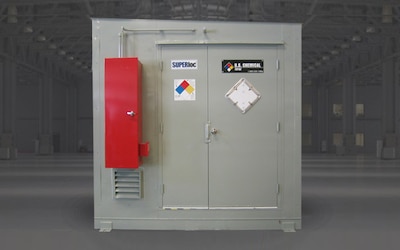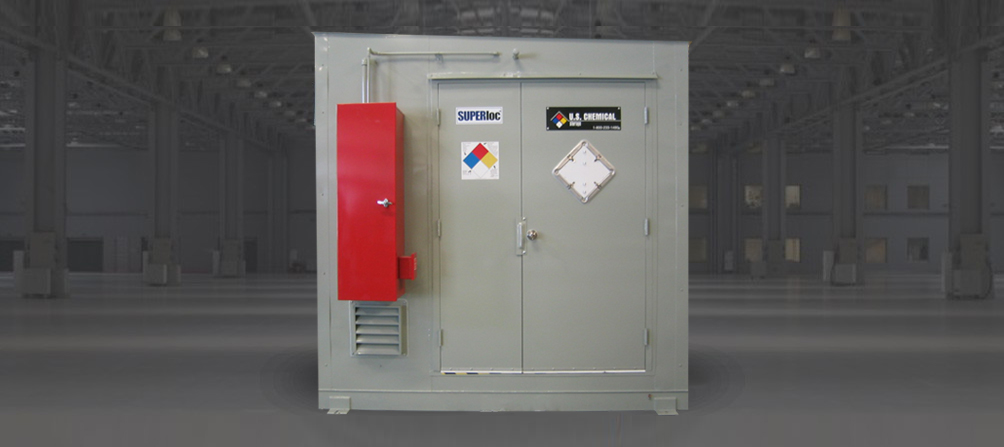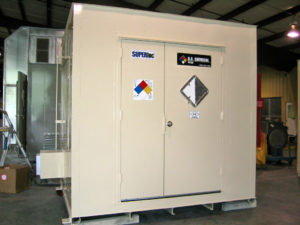Don’t Paint Yourself into a Corner, Use Safe Storage Buildings

 Paint falls under the coatings industry. It is one of many different types of coatings made and used. The American Coatings Association (ACA) categorizes coatings depending on their use:
Paint falls under the coatings industry. It is one of many different types of coatings made and used. The American Coatings Association (ACA) categorizes coatings depending on their use:
- Architectural coatings (like paint) make buildings beautiful.
- Industrial coatings finish products during manufacture at the factory.
- Companies use special purpose coatings after goods leave the factory. (e.g. automotive refinishing, industrial maintenance, traffic marking and marine applications)
Chemicals in Paints and Why it Matters
There are two main categories of paint, defined by their primary constituent. Paints are either water-based or oil-based (solvent-based). Oil-based paints contain a high level of organic solvents. They vent a noticeable odor from open containers and during application. Evaporating solvent causes the paint to dry, giving the paint its texture and finish. OSHA classifies solvents used to manufacture oil-based paints as flammable materials. Solvents used in oil-based paints can also be hazardous due to their toxicity. Adequate ventilation is important during application or while in storage. Water-based paints do not have the same hazards associated with the use of solvents. Their performance was inferior to oil-based paints but technical advances are changing that. Water-based finishes are now comparable to oil-based finishes and more people are using them. Paints also contain additives such as metals, which are hazardous.Flammable Paint Storage Buildings and Safety Advice
IBCs and 55-gallon drums are the most common containers for bulk paint supplies. Companies must store these containers safely. OSHA and NFPA are regulatory bodies that define requirements for safe areas or structures for storage.
SUPERloc – Paint Storage Building
Standards related to paints
- 29 CFR OSHA 1910.107 Spray finishing using flammable and combustible materials
- 29 CFR OSHA 1910.106 Flammable liquids
- 29 CFR OSHA 1910.123 Dipping and coating operations: Coverage and Definitions
- NFPA 30 – Flammable and combustible liquids code
Contact us
Contact U.S. Chemical Storage to learn more about storage of paints or to receive a complimentary quote. Our professional consultants can advise you on the best solution for your application. We are also familiar with regulatory requirements that are relevant to your industry.References
- American Coatings Association. Types of coatings
- Paint Quality Institute. Water-based versus Solvent-based
